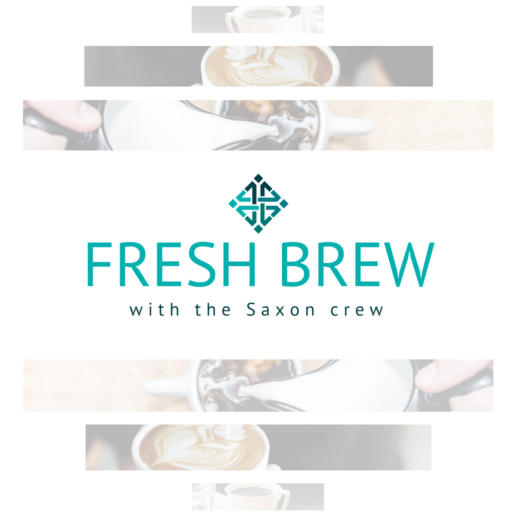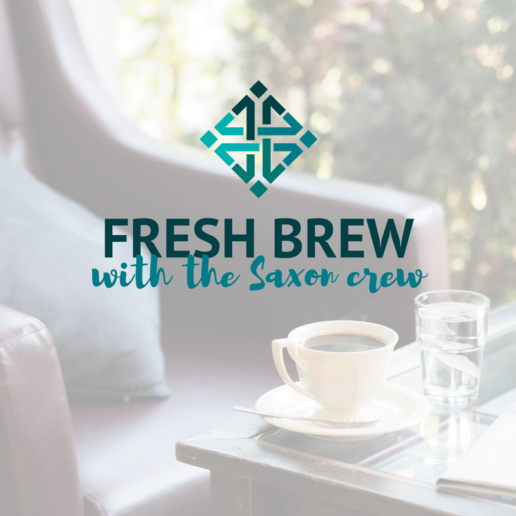Employee wellness programs and compliance: What to know right now
How do you decipher any given wellness program's compliance under the law? Under the Health Insurance Portability & Accountability Act (HIPAA) current guidance, employers need to assess whether the plan is “purely participatory” or “health-contingent.” Read this blog post to learn more about wellness program regulations.
Defining “wellness” for any one person is no simple task, and neither is deciphering a given wellness program’s compliance under the law.
In 2016, when the Equal Employment Opportunity Commission (EEOC) released its final regulations defining a “voluntary” program under the Americans with Disabilities Act (ADA), the entire landscape — at least what can be seen on a hazy day — appeared defined. But thanks to AARP’s successful challenge to these regulations and the EEOC’s recent acknowledgment of the demise of its incentive limitations, employers find themselves back in the “Wild West” of sorts for wellness compliance.
That being said, the uncertainty is not new for employers with wellness programs, and there is now more guidance than before, so let’s take a moment to take in the current view.
The current guidance under the Health Insurance Portability & Accountability Act (HIPAA) remains unchanged, so any wellness program integrated with a health plan or otherwise constituting a health plan itself, employers need to assess whether the plan is “purely participatory” or “health-contingent.” The health-contingent plans (which condition the award of incentives on accomplishing a health goal) will require additional compliance considerations, including—but not limited to—incentive limitations, reasonable alternative standards (RAS), and notice requirements.
The RAS should be of particular importance because they can be missed most out of the compliance parameters. Often there is an “accidental” program such as a tobacco surcharge, and the employer does not even realize the wellness rules are implicated, or the employer’s RAS is another health-contingent parameter that actually necessitates another RAS.
The Department of Labor is actively enforcing compliance in this area, so employers will want to take care.
Additionally, the EEOC’s ADA (and Genetic Information Nondiscrimination Act) regulations are still largely in force. This seems to be a common misconception—ranging from a celebration of no rules to a lament for the end of incentivized wellness programs that include disability-related questionnaires (like an average health risk assessment) or medical examinations (including biometric screenings).
The truth is somewhere in the middle.
The ADA’s own RAS and notice concepts still apply, along with confidentiality requirements. All that has changed is that the EEOC has declined (again) to tell us at what point an incentive turns a program compulsory. So employers sponsoring wellness programs subject to the ADA have three choices, based on risk tolerance (In truth, there are four options, but charging above the ADA’s previous incentive limitations would be excessively risky):
- Run incentives for ADA plans up to the 30 percent cap that existed before. This is the riskiest approach. To take this route, an employer must rely upon HIPAA’s similar (though not exactly the same) incentive limitations as indicative of non-compulsory levels. The fact that Judge Bates did not accept this argument in the AARP case advises against this approach, but this case does not have global application. If this path is chosen, it will be imperative to document analysis as to why this incentive preserves voluntariness for your participants.
- Keep the incentives below the previous 30 percent cap but incentivize the program. This approach does have risk because no one knows at what point an incentive takes choice away from participants. However, the incentive is a useful tool to motivate and reward health-conscientious behavior. The wellness incentive limitations stood at 20 percent under the HIPAA regulations for quite some time without much concern, so this could be a relatively safe target. But the most important thing is to carefully assess the overall structure of the program(s) offered, consider the culture and demographics of the employees who may participate, and balance the desire to motivate against the particular tensions of the program to decide on a reasonable incentive. Make sure to document this analysis and reconsider it every time a program changes.
- Not incentivize the program at all. This is the most conservative approach from a compliance perspective but ultimately not required. Before the EEOC’s 2016 regulations, employers were incentivizing programs subject to the ADA, and nothing about the AARP case or the EEOC’s response to it prohibits incentives.
There’s no doubt the wellness compliance landscape has changed a little over this last year, but this is also just the tip of the iceberg. With enforcement heating up, it is imperative for employers to carefully consider compliance, document the reasonableness of incentive choices and lean on trusted counsel when necessary to avoid potentially costly and time-consuming issues.
SOURCE: Davenport, B. (13 February 2019) "Employee wellness programs and compliance: What to know right now" (Web Blog Post). Retrieved from https://www.benefitspro.com/2019/02/13/employee-wellness-programs-and-compliance-what-to-know-right-now/
Treat Your Weekend Like A Vacation
How did you feel at work this past Monday? According to research, your answer may reveal a lot about your approach to the weekend. Read this blog post to learn more.
Take a moment to recall how you felt at work on a recent Monday. Were you happy and satisfied? Or stressed and worried?
Your answer may reveal a lot about the way you approached the prior weekend. According to our research in progress, making one small mindset change — treating your weekend like a vacation — can increase your happiness. And unlike taking a more traditional vacation, this emotional boost doesn’t have to be expensive or time-consuming.
My colleagues Colin West, Sanford DeVoe, and I came to these conclusions over the course of several studies. First, we looked at the effects of actual vacations on hundreds of thousands of Americans by analyzing the subscription-only 2014–2016 data from the Gallup U.S. Daily Poll. We found that individuals who prioritize vacation are significantly happier: They exhibit more positive emotion, less negative emotion, and are more satisfied in life.
The problem is that Americans are really bad at taking vacations. Compared to workers in the European Union, Americans spend more hours in the office each week and take less time off. Part of the reason is that the U.S. is the only industrialized nation without legally mandated vacation — one out of four employed Americans receive no paid vacation days at all. But Americans don’t even use the few vacation days they are allotted: More than 50% of Americans leave their paid vacation days unused each year.
This got us thinking. While most working Americans take little time off for vacation, the majority get (and take) two days off from work every week: the weekend. We wanted to see if there’s a way to help people leverage the time they already take off from work to enjoy the potential happiness they would get from a vacation.
To do this, we ran an experiment among more than 400 working Americans over the span of a regular weekend in May 2017. The intervention was simple: On the Friday leading into the weekend, we randomly instructed half of the participants to treat the weekend like a vacation. The other half, serving as a control condition, were instructed to treat the weekend like a regular weekend. That was it. How they interpreted the instructions was entirely up to them. Everyone was left to do whatever they wanted during those next two days.
When participants were back at work on Monday, we followed up with a survey measuring their current happiness (that is, their positive emotion, negative emotion, and satisfaction). The results showed that those who had treated their weekend like a vacation were significantly happier than those who had treated it like a regular weekend. This effect held when we controlled for the amount of money they reported to have spent. Thus, without taking any extra time off from work and without needing to spend any additional money, the simple nudge to treat their time off like a vacation increased their happiness when they were back at work on Monday.
These results seemed too good to be true, so we ran the study again with more than 500 different people on another regular weekend in January 2018. This time, we also measured how happy people were during the weekend, how they spent their time, and the extent to which they were mentally present. The experimental treatment was exactly the same: At random, half were instructed to treat their weekend like a vacation, and the other half were instructed to treat it like a regular weekend. Yet again, the vacationers were statistically happier at work on Monday. They were happier throughout the weekend as well.
How did treating the weekend like a vacation boost happiness? Yes, the “vacationers” behaved somewhat differently: doing less housework and work for their jobs, staying in bed a little longer with their partner, and eating a bit more. These differences in activities, however, weren’t responsible for their increased happiness. Instead, treating the time like a vacation seems to have shifted people’s mindset. Specifically, the vacationers were more mindful of and attentive to the present moment throughout their weekend’s activities.
For example, two women — one in the control group and one instructed to treat her weekend like a vacation — reported making breakfast on Saturday morning. The first woman reported doing so with enjoyment: “Made biscuits and gravy for breakfast. It’s my favorite!” The second woman took her enjoyment one step further: “I woke everyone up with pancakes this morning. It’s something I like to do when we are on vacation. I found myself enjoying the morning more than usual, maybe it’s because I focused on staying in the moment.” The difference between the women’s experience is subtle, but crucial. Even though their activities and behaviors were largely the same, it was the second woman’s attention to the present moment — her mindset — that produced the subsequent effect on happiness during the rest of the weekend and the following Monday.
Why does this mindset shift have such a powerful effect? Research shows that slowing down and paying more attention to your surroundings, the activity at hand, and the people who are involved allows you to enjoy the activity more. Without ruminating on the past or getting distracted by anxieties or fantasies about the future, increasing your attention to the present moment makes you more sensitive to the pleasures that are already in the environment. It helps you savor experiences and life a bit more.
Even if you can’t take the entire weekend “off” because of a looming work deadline or household obligations, it is still possible to gain the benefits of a vacation mindset. You can carve out a piece of the weekend (or perhaps even the workweek) to fully enjoy and be in the present, as you would on vacation. Or you can apply a vacation mindset to whatever task is at hand. Slow down, notice, and make it more fun; turn on some upbeat music in the car while running errands, or make yourself a margarita for folding laundry.
One word of caution: Given that the vacation mindset and resulting happiness stems from mentally breaking from routine and the day-to-day grind, this intervention cannot itself become a routine. Treating every single weekend or evening off from work like a vacation might cause a reduction in its cognitive and emotional impact. We recommend saving the mental vacations for when you really need the break.
When used judiciously, however, this simple reframing allows you to enjoy some of the happiness from a vacation without taking additional time off. Our experiments suggest that your mindset is more important than the activities you take part in, or the amount of money you spend, when you’re not at work. So between weekend errands, soccer practices, and birthday parties, try to notice and appreciate the time you do have. Treating this time like a vacation can provide a needed break from the typical grind, allowing you to appropriately savor moments spent at the soccer field or gathered around the dinner table with family and friends. And when you do head back to work, you’re more likely to feel refreshed and ready to tackle your week.
SOURCE: Mogilner Holmes, C. (31 January 2019) "Treat Your Weekend Like A Vacation" (Web Blog Post). Retrieved from https://hbr.org/2019/01/treat-your-weekend-like-a-vacation
With the Advent of Remote Work, Is the ‘Sick Day’ Becoming Passé?
With many employees working remotely full time, is the practice of employee sick days becoming out of date? Read this blog post from SHRM to learn more.
Your advertising manager works from home full time. She has a nasty cold. But hey—she only needs to walk a few steps from her bedroom to her desk, can nap when she needs to and won't infect her colleagues. So she doesn't really need to take a sick day, right?
Well, she probably should, but as remote work continues to rise, workplace experts find that those who do their jobs from home are inclined to stay on the clock while soldiering through colds, the flu and other maladies—in part because they don't want to appear to be taking advantage of their work-from-home benefit.
"Remote workers find it hard to integrate work with the rest of their life because it is so easy to overwork and even plow through your work while you are sick," said Jeanne Meister, founding partner of Future Workplace, a New York City-based HR executive network and research firm. "If you are only traveling from your bedroom to your home office, remote workers may rationalize, 'What harm can be done if I work while I am sick? At least I'm not contagious.' "
In addition, the advent of remote working has introduced another trend: managers suggesting that onsite employees work from home when they're sick.
"It's no secret that many [workplaces] have cultures that encourage the 'always-on' mentality," said Erica Denner, head of people and culture at YouEarnedIt/HighGround, an Austin, Texas-based company that focuses on employee recognition, rewards and performance management. "In my experience, I've found that because of this, employees at these organizations can find it difficult to ask for time off when they're sick and are often encouraged to work from home instead."
Circumstances Matter
Thanks to technology that facilitates remote work, there are instances when working during what otherwise would have been a sick day may actually be a win for the employee and employer.
"There are all kinds of reasons to take sick days," said Ellen Galinsky, president of the Families and Work Institute and a senior research advisor for the Society for Human Resource Management. "If employees have a condition that affects their ability to be mobile, like a broken bone or torn tendon, they might have to take a sick day if they work in a traditional workplace because travel to work would be difficult, but they could easily work at home. I can think of other such illnesses, such as having something contagious and not wanting to infect others but feeling good enough to work or being postoperative and being able to work in short spurts. Working at home could be ideal for that."
Consider U.S. Supreme Court Justice Ruth Bader Ginsburg, who recovered from cancer surgery at home but nonetheless heard arguments in a case before the court. A court spokesperson said Ginsburg would participate "on the basis of briefs, filings and transcripts," CNBC reported.
But if working while ill prevents an employee from fully resting and recuperating, this will likely hinder performance—and even future productivity and morale.
"If an employee is really sick, he or she might power through and get a few things done but might not do them well," Galinsky said.
Working through your cold, sore throat or flu not only can lead to a decline in physical well-being but "also can present mental health challenges," Meister said.
Contractors, or so-called gig workers, in particular, may be wary of taking sick time. Lacking job security, they may fear that doing so would make them appear dispensable to their employers.
What Employers Can Do
To discourage employees from avoiding sick days because they're working remotely:
Communicate to employees that you expect them to take time off when they're sick. Or, encourage them to be open about how much work, if any, they feel they can accomplish. "If you can't produce high-quality work, even from the comfort of your own home, when you're under the weather, relay that message to your manager," Denner said. "If they value your contributions and are a good supervisor, they will understand and step in to help until you're feeling better."
At YouEarnedIt/HighGround, workers are asked to make it clear when they are out sick and unavailable. This includes setting up not only the typical out-of-office notification by e-mail but also notifications across productivity platforms the company uses, such as Slack. "It's remarkable how effective turning on the 'out sick' emoji in Slack is in terms of alerting colleagues you need time to recover," Denner said. "When employees are out on a longer-term medical leave, we actually remove their technology access so they can't check e-mails or Slack. This way, the employee doesn't feel guilty or obligated to respond to messages."
Talk about the importance of taking sick days for one's physical and mental well-being. Bring up the topic during all-hands meetings with onsite as well as remote workers. In benefits materials and handouts, address the importance of taking sick days.
Ensure that managers and executives take sick days themselves. When a boss shows up at a meeting sniffling and coughing, she sends the clear message that work is too important to be interrupted by illness. And that only leaves her subordinates feeling guilty if they take sick days.
"We've found that [modeling sick-day behavior] actually goes a long way in not just encouraging our employees to do the same, but also in further solidifying a culture of trust and respect," Denner said.
Encourage remote workers to take time for themselves even when they're healthy—such as taking a midday break—and reinforce how this is important for their well-being and productivity.
SOURCE: Wilkie, D. (6 February 2019) "With the Advent of Remote Work, Is the ‘Sick Day’ Becoming Passé?" (Web Blog Post). Retrieved from https://www.shrm.org/resourcesandtools/hr-topics/employee-relations/pages/remote-workers-and-sick-days-.aspx
Why chiropractic services could be the next big thing in wellness
Could chiropractic services be the next big thing in wellness? The American College of Physicians' care guidelines recommends the conservative, non-pharmacologic treatment chiropractors provide. Read on to learn more.
The next popular wellness perk could be offering chiropractic services at on-site medical centers.
On-site or near-site clinics typically offer services to employees including first aid, occupational health, condition management, wellness and ancillary services — and increasingly chiropractic care.
Employees, healthcare administrators and physicians are recognizing the health and employee satisfaction benefits of integrating chiropractic care into multidisciplinary settings, research suggests. Care guidelines from the American College of Physicians recommend the conservative, non-pharmacologic treatment chiropractors provide. Employers are finding that adding chiropractic care to their worksite health center teams reduces direct costs of care, decreases opioid prescriptions for neuro-musculoskeletal episodes and improves health outcomes.
Healthcare costs for employers are expected to reach $15,000 per employee in 2019, according to the National Business Group on Health. The direct and indirect costs associated with low back pain are estimated between $85 billion and $238 billion, and expenditures for back pain are rising more quickly than overall health expenditures. To help stem that growth, as many as 65% of large companies are expected to offer on-site or near-site care by 2020, NBGH reports.
Employer focus on improving workers’ health and wellness has gained momentum in recent years, as evidenced by last year’s announcement from Amazon, Berkshire Hathaway and JPMorgan Chase that they would form an independent healthcare company for their U.S. employees. Another example is employers with self-funded health plans contracting with narrow, high-quality provider networks and even negotiating directly with local hospitals on their prices.
Clinics offer similar cost control and oversight benefits. More importantly, they offer faster and easier access to care that keeps employees healthy, motivated and engaged — and out of the emergency room or hospital. As such, 54% of large employers currently offer on-site or near-site clinics, while another survey showed that 94% of employers reported their clinics improved employee health and 95% said they contributed to increased employee productivity.
Each clinic’s services, cost-sharing, use privileges and staffing can be customized to meet the needs of a specific organization and employer benefit plans. These decisions should be reflective of the objectives of the sponsoring employer and the healthcare needs of the population.
While most healthcare clinics are located on-site or close to the workplace, a growing number are near-site or shared clinic locations, serving populations from multiple locations of the same employer or various employers. Additionally, more care is being delivered virtually. The objective is to provide easy access and immediate attention for employees, at little or no cost, for a host of services and products that an employee would normally have to leave the work site to obtain.
According to a recent survey by the National Association of Worksite Health Centers, the majority of employers reported their workers had expressed interest in chiropractic services at their clinics. The nationwide cost for treatment and management of low back pain and arthritis has reached $200 billion annually. Another study attributes two-thirds of these costs to lost wages and reduced productivity.
The fact that chiropractors deliver drug-free therapies should be particularly meaningful to employers in light of the country’s opioid abuse epidemic. The good news is a recent study published in “The Journal of Alternative and Complementary Medicine” concludes that for adults receiving treatment for low back pain, the likelihood of filling a prescription for an opioid was 55% lower for those receiving chiropractic care than for adults not receiving chiropractic care.
In particular, chiropractors follow evidence-based and value-based guidelines to promote safety and effectiveness. Findings like these and many others show that by adding chiropractic care, employers will strengthen the opportunity for cost savings, improved outcomes, greater worker productivity and stronger employee retention.
SOURCE: Lord, D. (25 January 2019) "Why chiropractic services could be the next big thing in wellness" (Web Blog Post). Retrieved from https://www.benefitnews.com/opinion/why-chiropractic-services-could-be-the-next-big-thing-in-wellness?brief=00000152-14a7-d1cc-a5fa-7cffccf00000
Fresh Brew with Kelley Bell
Welcome to Fresh Brew, where we will be exploring the delicious coffees, teas, and snacks of some of our employees! You can look forward to our Fresh Brew blog post on the first Friday of every month.
“Wellness…health insurance costs less for healthy people so, be a person of excellence which is a person that cares what they put into their body.”
Kelley Bell is a Group Health Benefits Consultant at Saxon. Kelley has over 25 years of experience in the financial industry. Kelley enjoys partnering with business owners and those responsible for choosing benefits for their employees. She understands that every business is unique and is dedicated, accessible and proactive in serving the needs of each client.
When not working, Kelley enjoys watching her son play college baseball. He is a sophomore at Old Dominion University in Norfolk, Virginia on a baseball and academic scholarship.

Water
Kelley favorite brew is water!

Fruits and Veggies
Kelley’s favorite snacks are fruits and veggies.
Analytics are key to wellness success. Here’s why
How can benefits managers utilize analytics to maximize their companies’ investments? Continue reading to learn how analytics can help employers optimize their health, wellness and other benefits programs.
What do benefits managers have in common with Walmart? Both have the power to leverage data to create a sustainable competitive advantage.
Like other leading retailers, Walmart mines vast quantities of data and applies predictive analytics to fuel solutions that improve store checkout processes, maximize inventory turnover and optimize product placement. Data analytics also helps the company identify shoppers’ preferences and personalize their shopping experiences. New parents, as identified by prior purchases, might receive digital coupons for infant products, for instance.
Walmart’s data intelligence gives the international retailer the ability to act upon insights quickly. One Halloween, for example, a novelty cookie generated high sales across the United States, but no sales at all in two U.S. stores. The company’s data analytics swiftly ascertained that the cookies were never put on the shelves at those stores. The problem was resolved immediately through high-visibility product placement.
Employee benefits managers have similar opportunities to maximize their companies’ investments. The effective use of disparate data can help employers optimize their health, wellness and other benefits programs, and pinpoint the true value of their total rewards.
A data-driven approach to benefits analytics
Three out of five U.S. employers use health screenings and risk assessments to help employees detect conditions earlier, when treatment might be more effective and costs lower. However, the majority of employers do not measure the impact of these programs.
Those that do assess a program’s impact typically compare the dollars spent on it with the medical claims saved. Forward-thinking benefits managers, however, are examining the total value of investment (VOI) instead. This innovative approach analyzes not only the effect of a wellness initiative on medical costs but also its influence on productivity, absenteeism, disability costs and other factors.
By aggregating and analyzing different types of data — such as claims and non-claims data — benefits managers can determine crucial correlations between preventive screenings, health outcomes and healthcare costs. Thus, they can develop more targeted benefits packages that reduce costs while improving overall employee health and productivity.
Case Study: Implementation of predictive analytics in preventative screenings
One recent initiative undertaken by a state employee health plan demonstrates the power of data analytics to reveal the VOI of preventive cancer screenings.
The state provides medical benefits to around 205,000 employees and dependents. The agency that administers the benefits program wanted to know whether preventive cancer screenings improved health outcomes, and whether the program was cost effective. Analyzing screening and claims data showed that 6% to 8% of those who underwent screenings for breast, colorectal or cervical cancer received a diagnosis of cancer or a related condition. The follow-up and all-important question was: did those members experience different outcomes than members whose cancers were not detected through screenings?
The results indicated a high VOI for members’ preventive cancer screenings:
- The majority of new cases of breast, colorectal and cervical cancer were detected through preventive screenings.
- Among members who received preventive screenings, 5% to 11% underwent treatments because of screening results — and not just for cancer. Treatments included removal of benign tumors or polyps.
- Those diagnosed with breast, colorectal or cervical cancer through the screenings experienced less invasive treatments and had fewer complications than those diagnosed through other means.
- New cases of breast and cervical cancer diagnosed through the preventive screenings had lower costs, on average, than cases detected through other means.
Positive action through data
This cancer screening example illustrates how data analysis can empower benefits managers to improve employees’ health outcomes while reducing costs. Analytics can help employers invest in more effective care management resources, as well as design benefits packages that provide positive VOI in wellness, screening and preventive care.
With the cost of health benefits continuing to rise, it’s critical to leverage data to determine the total value of wellness investments. Just as retailers use data analytics to improve the retail experience and increase profits, benefits managers should use data analytics to guide the design and evaluation of benefits and other rewards.
SOURCE: Kramer, M. (21 January 2019) "Analytics are key to wellness success. Here’s why" (Web Blog Post). Retrieved from https://www.benefitnews.com/opinion/analytics-are-key-to-wellness-success-heres-why
Artificial intelligence enthusiasm outpacing adoption
A new survey by the RELX Group reports that adoption of artificial intelligence and machine learning is lagging among key decision makers. Read this blog post from Employee Benefit News to learn more.
Artificial intelligence and machine learning have become essential for organizations to stay competitive. But adoption is lagging even among key decision-makers championing change.
That is the finding of a new survey by the RELX Group, a global provider of information and analytics. The company surveyed 1,000 U.S.-based senior executives across government, healthcare, insurance, legal, science/medical and banking in September 2018, and found that 88% agree that AI and machine learning will help their businesses be more competitive.
While the value of the technologies is clear to executives, only 56% of organizations use machine learning or AI. In addition, only 18% of those surveyed plan to increase investment in these technologies.
“Organizations [that] can successfully use emerging technologies such as AI and machine learning to provide their customers with better products and advanced analytics can emerge as the leaders of the future,” said Kumsal Bayazit, chairman of RELX Group’s Technology Forum.
“While awareness of these technologies and their benefits is higher than ever before, endorsement from key decision makers has not been enough to spark matching levels of adoption,” Bayazit said.
The study showed that AI and machine learning are making their mark, with 69% of those surveyed saying the technologies have had a positive impact on their industry. Machine learning and AI are helping solve challenges by automating decision processes (cited by 40%); improving customer retention (36 percent); and detecting fraud, waste and abuse (33%).
This story originally appeared in Information Management.
SOURCE: Violino, B. (2 January 2019) "Artificial intelligence enthusiasm outpacing adoption" (Web Blog Post). Retrieved from https://www.benefitnews.com/news/artificial-intelligence-enthusiasm-outpacing-adoption?feed=00000152-a2fb-d118-ab57-b3ff6e310000
4 ways to help employees make better choices about what they eat
Are you looking for ways to help your employees reach their wellness goals? The RAND Corporation reported that 60 percent of Americans suffer from at least one chronic condition. Read this blog post to learn more.
Doughnuts in the conference room. Soda and chips from the vending machine. Cookies in the office kitchen. A recent CDC study of employees across the U.S. found that the foods people get at work tend to contain high amounts of salt, sugar and empty calories.
When people are busy and on-the-go — a common reality for full-time employees who spend more than a third of their day at work — it’s all too easy to fall into poor eating habits. And poor eating habits contribute to poor health. According to a RAND Corporation Study, 60% of American adults suffer from at least one chronic condition (like diabetes or high blood pressure) and 42% have more than one. These conditions are costly, and not just for individuals themselves. The CDC estimates that productivity losses related to health issues cost U.S. employers $1,685 per employee per year, or $225.8 billion annually.
For employers that care about wellness, improving food and beverage offerings represents an untapped opportunity: Better nutrition at work can not only have a powerful impact on employee health but also contribute to a happier, more focused and productive workforce. Making large-scale changes across an organization is not always easy, however, especially when it comes to ingrained habits and preferences. What can today’s employers do to incentivize their employees to make healthier choices?
1. Make healthy food and beverages a benefit.
It’s pretty simple: When more nutritious offerings are readily available — and especially if they are free or subsidized — people are more likely to try them. Companies that offer high-quality food and beverages as a benefit will reap rewards not just in terms of a healthier and more productive workforce, but also in attracting and retaining people, like millennials, who value wellness and appreciate the fact that their employer is investing in their health and happiness.
2. Get personal.
With a better understanding of habits, preferences and what drives people to the kitchen or break room in the first place (boredom? low energy? social time?), employers can begin to build a food and beverage profile that’s tailored to their workforce’s individual needs and thus more likely to be embraced.
3. Consider the “psychology” of snacking.
For example, kitchen spaces that are attractive, comfortable and inviting encourage people to take a little more time and put more thought into selecting their snacks, and can also serve as a welcome place for people to connect with each other and de-stress. Taste is another important consideration. People sometimes assume that healthy food won’t taste as good as the bad stuff, but this is often just a misconception. Special tastings or fun office activities like offering a “snack of the week” can get people to try more nutritious options and see for themselves that they can be just as — if not more — delicious than what they were eating before.
4. Nudge, don’t push.
Workplace wellness initiatives continue to grow in popularity, but there are still questions about whether these programs are as effective as they could be. While health screenings, smoking cessation programs and gym memberships are a good start, corporations shouldn’t overlook a key driver of good health — what their people eat and drink. Providing easy access to a great diet at work is a smart strategy for improving wellness, and one that employees will come to appreciate as a valuable benefit. Plus, healthy, enthusiastic and energized people makes for a much happier and more productive workplace — a win-win for employees and employers alike.
SOURCE: Heinrich, M. (3 January 2019) "4 ways to help employees make better choices about what they eat" (Web Blog Post). Retrieved from https://www.benefitnews.com/list/4-ways-to-help-employees-make-better-choices-about-what-they-eat?brief=00000152-14a7-d1cc-a5fa-7cffccf00000
5 ways employers can boost employee engagement
Are you looking for ways to boost employee engagement this year? According to Work Institute, employers could prevent 77 percent of turnover by improving the employee experience. Read this blog post to learn more.
With it being a new year, employers are in a unique position. Unemployment is at its lowest rate since 1969, leaving HR managers with a dearth of qualified candidates to fill open positions.
But filling current openings isn’t the only challenge HR teams face: An estimated 42 million employees will leave their jobs in 2019 in search of workplaces that better meet their needs and expectations. Turnover that significant leaves employers with only one option — focus on improving the employee experience to increase employee retention and satisfaction.
The good news is that employers could prevent 77% of that turnover, according to a study from Work Institute.
Beyond competitive pay and benefits, how do employers create an exceptional experience for their employees? By offering engaging programs, resource groups and events that enhance employee connections and develop a more thriving workplace culture.
We predict that successful companies will use a combination of the following five trends to increase employee satisfaction and improve retention in 2019.
1. Make employee experience technology easy to use
In addition, a poor user experience also can negatively color an employee’s opinion of the organization as a whole, making them more likely to leave.
Consumer-grade interfaces on user-friendly platforms are critical for encouraging employees to participate in workplace groups and programs. When companies invest in employee groups and programs, they expect to see ROI in the form of increased engagement and satisfaction. The key to success is making participation easy.
2. Keep employee experience programs consistent across the organization
For example, wellness programs help improve employee health, satisfaction and engagement. But a lunchtime yoga series offered at company headquarters may make work-from-home employees feel left out.
3. Give employees more control over benefit spending
Giving employees this autonomy not only increases the likelihood that they’ll participate, but it also makes it easy for HR teams to distribute benefits fairly across the entire organization.
4. Streamline data to accurately track employee engagement
Having participation metrics readily available makes it easy for HR teams to see which programs are working and which aren’t resonating with employees. They’re also able to deliver that information to the C-suite and make the case for additional funding where needed.
5. Devote more funding to employee resource groups
Making ERGs a priority when allocating funds for the year will pay off, but only if they’re handled the right way. Using an automated platform to manage ERGs, promote events, track participation and encourage feedback saves HR teams both time and resources, giving them the opportunity to devote more time to improving the employee experience.
Want to fight employee burnout? Focus on well-being
Employees with higher well-being are more likely to be productive, energized and engaged in their work. Read this blog post to learn how you can fight employee burnout by focusing on well-being.
Well-being can be described as feeling good and living with a sense of purpose. When employees have higher well-being, they’re more likely to be productive, energized and engaged in their work, as well as feel more committed to their organization. It’s what all leaders want for their employees. But can there be such a thing as too engaged? Can a super high level of engagement actually leave employees susceptible to burnout?
New research shows that burnout is real — and it can happen to anyone. But the saddest part is that the people it affects the most are people that care the most. In other words, your most dedicated people. It happens when highly engaged employees have increasingly low well-being due to overwhelming job pressures, work overload and a lack of manager or organizational support. Prolonged exposure to chronic emotional and interpersonal stressors on the job can lead to exhaustion, cynicism and inefficacy — even for people who are all in at work. Ultimately, these top-performing, highly-engaged employees will leave — or worse, the burnout will spread to other employees causing a toxic fire across your company. The good news is that burnout is totally preventable. You just have to know where to start.
Employee burnout is actually more a problem with the company than with the person. Both the root causes and the best solutions start at the organizational level. This doesn’t mean we should stop building emotional skills like mindfulness, resilience and fitness. But it does mean that in order to solve for burnout at your company — or at least extinguish the flames — the organization is driving the bus.
Here are four ways employers can take action by focusing on well-being to extinguish employee burnout.
1. Help employees connect to their purpose. Today, more employees are looking for real meaning and purpose in their work. Whether it’s a connection to a greater mission or following personal passions, purpose-driven employees give more and feel more fulfilled in doing so. In addition to feeling an emotional connection to their work, a sense of purpose also connects them to the company and ultimately affects their well-being and engagement. In fact, according to a study by Deloitte, 73% of employees who say they work at a “purpose-driven” company are engaged, compared to just 23% who say they don’t.
Helping employees connect to their purpose is key for burnout prevention. Focus on effective communication that linearly connects each employee’s work to the company’s mission. Set clear goals to continue to support employees in not only finding their purpose but staying connected to their purpose.
2. Foster a well-being mindset. We’re all wired differently — and that’s even more apparent when it comes to the workplace. How people think about stressful situations has an impact on their ability to handle and recover from them. For example, an employee who fears conflict versus an employee who takes it head on are going to have different reactions and recovery times.
As a leader or manager, when you know how people think about stress, you can help them cope with it and prevent burnout. Avoid organizational consequences such as absenteeism or turnover by communicating and encouraging positivity, self-care and weaving well-being into daily tasks.
3. Promote social support and connectedness. At the core, people want to rely on people. Support from an employee’s peers can mean everything. In fact, social support impacts stress, health, well-being and engagement — and ultimately, people feel better and have higher well-being when they feel connected to others. It’s more than a like on a community feed or high-five in the hallway — putting social connections at the forefront of your people strategy or employee engagement program can make a real impact.
Social connections like a company community feed, women in the workplace group or lunch buddies paired up across different departments helps employees get the support they need and guards against burnout.
4. Invest in tools to combat burnout. People who push themselves without taking breaks have a greater chance of being unproductive and burning out. Recovery time from workplace stress is key. Whether physically or mentally, everyone needs a break to recover — it’s natural to need to recharge and refresh. Even small recovery times or breaks can help people deal with the symptoms of burnout. And there are great new tools to make it easy to schedule and take a vacation and “hit refresh” with the full support of your company.
Make well-being a priority to reduce stress by investing in technology that can help you spot burnout, adjust workloads and have awareness of your employees’ stress levels. Take the Limeade burnout risk indicator for example. It allows leaders to see the risk levels for specific groups, and automatically target science-based activities to improve well-being and avoid cynicism (and worse).
When it comes to burnout in the workplace — you can tackle the symptoms to prevent top performers from burning out. Don’t make the mistake of misinterpreting burnout as disengagement. It’s time to take responsibility for burnout and take action at every level.
SOURCE: Albrecht, H. (31 December 2018) "Want to fight employee burnout? Focus on well-being" (Web Blog Post). Retrieved from https://www.benefitnews.com/opinion/want-to-fight-employee-burnout-focus-on-wellbeing?feed=00000152-a2fb-d118-ab57-b3ff6e310000














